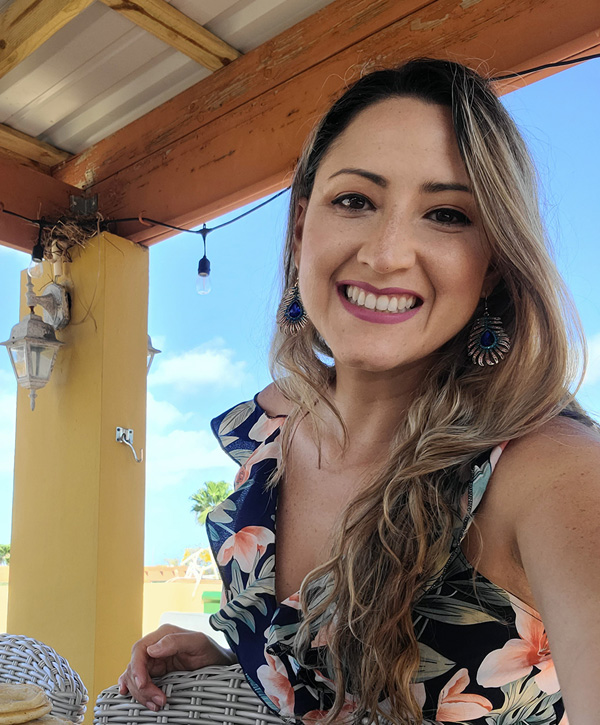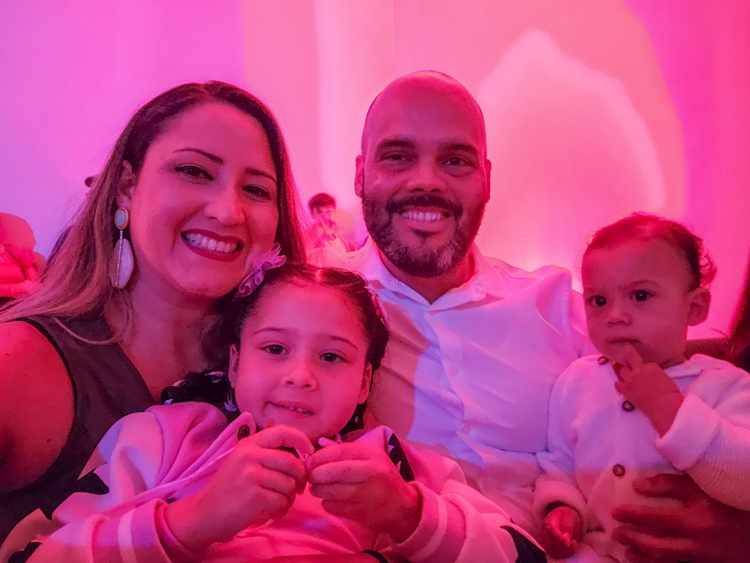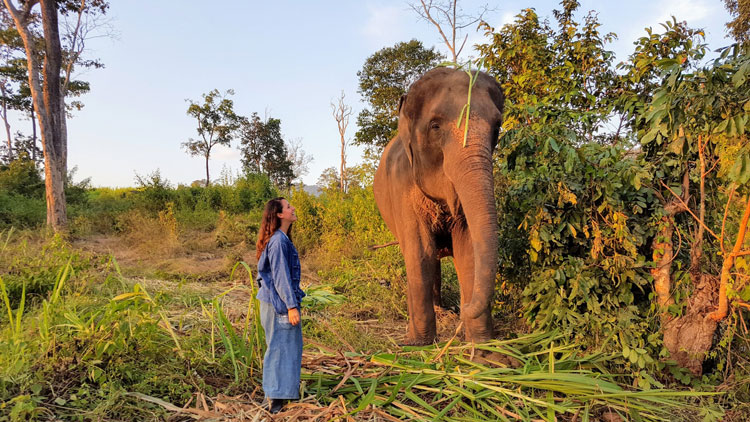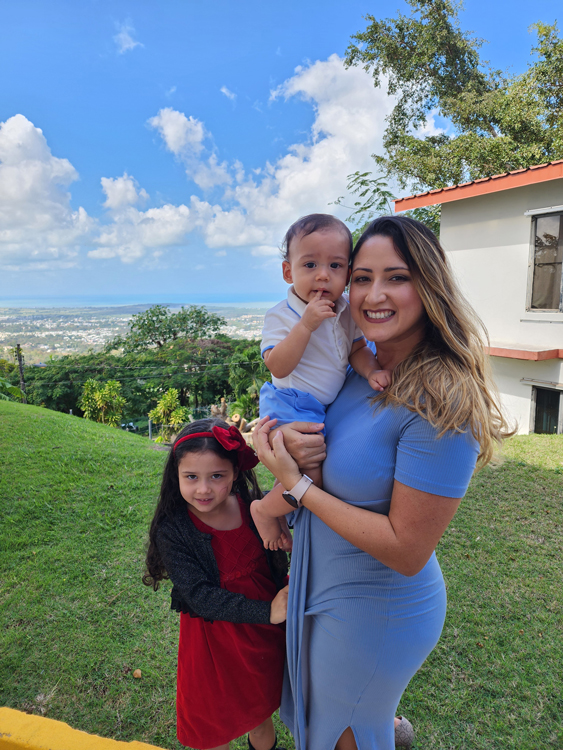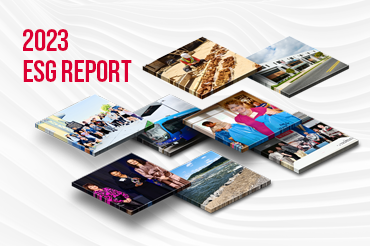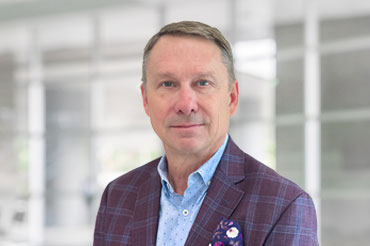Ister Morales, PE, PMP
VICE PRESIDENT & DIRECTOR, ASSET MANAGEMENT AND RESILIENCY
LOCATION: FAIRFAX, VA.
Ister Morales, PE, PMP
VICE PRESIDENT | DIRECTOR, ASSET MANAGEMENT AND RESILIENCE
LOCATION: FAIRFAX, VA.
“I am most excited to connect with others and be part of Gannett Fleming’s collective growth. I look forward to strengthening current connections and creating new ones.”
Passionate about asset management and resiliency, Ister Morales, PE, PMP, is a great example of the power of determination and curiosity for women in STEM fields. Her unique career path has prepared her for her leadership role as the Asset Management and Resiliency Business Line leader.
We asked Ister a few questions. Get to know her here:
Tell us about your path to business line leader.
My career path has gone the opposite way of a project delivery cycle — starting in construction, then design, and now in planning, policy, and strategy. My position as business line leader allows me to think strategically, considering both short- and long-term goals and objectives, and work towards accomplishing them. Having experience in construction and design enables me to think holistically from all phases of a lifecycle, from planning and creating to operating and maintenance. I like to keep the bigger picture in mind, going beyond specific tasks and thinking critically about how the task affects other systems, practices, people, etc.
I started my career in 2009 as a construction management field engineer. I worked on two mega projects in the Washington, D.C., Metro area: the 495 Express Lanes and the first phase of the Metro Silver Line. This experience taught me firsthand about project management principles and gave me the opportunity to learn about fieldwork and constructability.
The second phase of my career was working in design as a transportation engineer, which forced me think holistically about the transportation network and all of its different components and interdependencies. I got to see how all of the different pieces come together to complete a project through the development of a full set of plans (right-of-way, erosion and sediment control, profiles, cross sections, etc.). During this time, I returned to school for my graduate degree in transportation policy, operations, and logistics from George Mason University.
While I didn’t initially plan to move away from technical engineering work, I ultimately joined Gannett Fleming as a transportation analyst. My interest and curiosity, along with the opportunities provided, resulted in additional responsibilities and and accelerated growth in my career path.
Why Gannett Fleming?
I joined the team in August 2017. At the time, I was looking for engineering firms where I could apply my background experience, but I also wanted to work for a company that offered clients solutions beyond the traditional architecture, engineering, and construction (AEC) service offerings. The opportunities for growth at Gannett Fleming and the people that I work with are why I’m still here, along with the company’s emphasis on innovation and diversity, equity, and inclusion through different employee resource groups.
Tell us about your role and responsibilities.
My responsibilities as a business line leader include leading our team, creating new internal and external relationships, advocating and promoting our services, and ensuring alignment and contribution to corporate goals. While I have contributed to these activities in the past, I am now officially responsible for them, which is something I do not take lightly. I am constantly thinking about ways to better connect with my team, growing and connecting with other business lines and corporate business groups, and ultimately, how to best serve our clients.
I continue to grow and learn from my peers and leaders while adjusting to changes as needed. I often think of the potential to provide a complete suite of services — from design to construction to asset management to eliminating collecting asset data after the fact. There is a lot of potential for growth, and I’m here to take on the challenge and help further position Gannett Fleming as an industry leader.
How does the firm support your professional development and career growth?
Gannett Fleming has provided me with multiple training opportunities, such as our Project Management Academy. The firm has also supported me in obtaining my Project Management Professional (PMP) certification and participating in Transportation Research Board committees and conferences.
I’ve had the opportunity to be part of the firm’s Quality Leadership Team, Planning Leadership Team, Resilience Committee, and Connected Relationships™ Mentoring Program. Additionally, Gannett Fleming has encouraged me to collaborate with other business groups and employees, resulting in some of the most interesting and innovative project opportunities and great internal connections.
What are the most rewarding aspects of your job?
Knowing that our work positively impacts the traveling public and being able to assist our clients in making transportation systems safe, efficient, reliable, and secure.
What do you see for the next generation of employees at Gannett Fleming?
Continued innovation, improved communication, greater diversity, and even more space to bring your authentic self to work.
Why is asset management important?
In the broad sense, asset management is realizing value from an organization’s assets. It covers the full project lifecycle, from conceptual planning to design to construction to delivery through to operations, maintenance, and rehabilitation, and finally to replacement or retirement. It includes basic work management but also considers preventive maintenance and condition assessment to support assets reaching their intended lifespans and producing the highest return on their investment. Often, the goal is getting to a place where you’re able to predict maintenance while understanding the total cost of ownership.
Risk-based asset management is essential for proper management of infrastructure assets. Think of your car. You want to make sure it’s properly maintained so that it functions to its maximum potential and lasts as long as possible. This requires trusting and following the manufacturer’s recommendations and diligent adherence to the maintenance schedule. You must also trust your mechanic to know your vehicle’s parts, their location, and how they fit and function together. Most vehicle owners follow their mechanic’s recommendations to keep their car operating most efficiently and to mitigate costly repairs and losses.
The same concept and principles apply to all assets. Asset management helps us determine what to do, when to do it (lifecycle management), how to do it cost-effectively to maintain an acceptable level of service, and doing so while evaluating the risks involved. It focuses on business and engineering processes to inform decisions based on accurate information and supporting progress towards your goals and objectives.
How does your work contribute to the firm’s vision of creating a better future, together?
Our work creates a more resilient future. For example, I worked on several Federal Highway Administration projects to incorporate extreme weather and climate into asset management practices. We coordinated with two states that experience different weather-related risks.
For one state, we identified factors contributing to flooding at the top flooded location in that state. For the other state, we developed a geospatial database specific to resiliency and initiated the development of lifecycle management templates to address extreme weather and climate issues in its transportation network.
We assist clients in integrating risk and resilience management strategies at various levels of their organizations; promote a design philosophy that is based on resilience before, during, and after emergency events to help minimize and mitigate impacts on our clients, their customers, and the environment; and support the recovery of our clients’ assets to quickly rebuild and restore damaged infrastructure.
Most agencies are moving toward an enterprise approach of integrating various systems and using accurate data for improved decision-making. Our asset management services allow our clients to make informed decisions on their capital and operational programs to maintain and make progress toward their state of good repair.
What leadership skills and characteristics do you rely on the most?
Communication. It has helped me collaborate well with others in the company, regardless of their position, background, or discipline. And vulnerability. Admitting I don’t have all the right answers, staying curious, and asking questions have served me well in my professional and personal life.
Why is it important to have diversity around the table when working on projects?
Diversity in the workplace allows for different perspectives and solutions that may otherwise be missed.
As a Hispanic woman in transportation, I’ve encountered nothing but encouragement, support, and great leadership from everyone I’ve worked with. It’s refreshing to work for a firm that takes risks, isn’t afraid of change, and constantly looks for ways to improve.
Could you tell us about your cultural background?
I was born and raised in Valencia, Venezuela, and moved to the U.S. when I was 16. I learned English as an extracurricular activity when I was young but never had to use it until we moved to Arlington, Virginia. Transitioning from a private Catholic school in Venezuela to a public school in the U.S. was an interesting and challenging experience. I joined every after-school activity I could to improve my English.
I would describe Venezuelans as family-oriented, lively, resilient, welcoming, helpful, and passionate about food and music. Now that I have a daughter and a son, I teach them everything I can about Venezuelan culture.
Let’s talk family!
My husband and I got married in 2011 after dating for six years, and we have a daughter named Olivia and a son named Angel. We recently added a new family member — Pepe Julian, a dachshund puppy.
What’s your favorite family tradition?
Serenading family members first thing in the morning on their birthdays and bringing gifts to their bedside.
What’s something most people don’t know about you?
Here are several things: I’ve played the piano since I was six years old and got a music minor in college. I was part of a step team in high school. I took a sabbatical in 2016 to travel and volunteer in Southeast Asia for nine months. And I’m not a fan of peanut butter.
What are your favorite ways to unwind after a busy day?
Playing with my kids, including impromptu kitchen dance parties.

JOIN OUR JOURNEY
Ready to tackle some of the biggest challenges facing our communities? Join the team that’s leading the charge.
